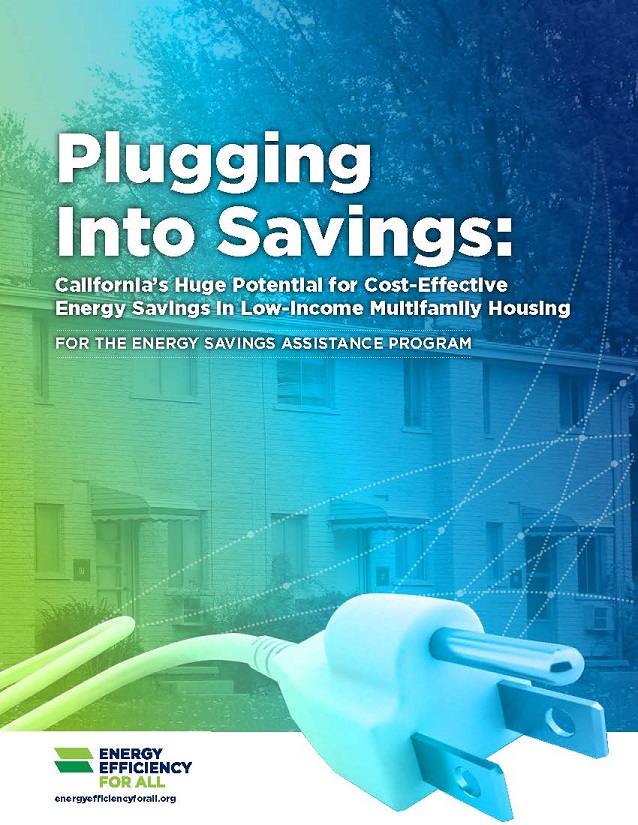Matthew Socks, Philip Mosenthal, Maria Stamas, Lindsay Holiday, Charlene Chi-Johnston
EEFA commissioned this study to quantify the cost-effective savings available for more than 1.4 million Energy Savings Assistance (ESA) Program-eligible, low-income, multifamily households. This study also pinpoints where these energy-efficiency opportunities are. For example, it quantifies how much can be saved with efficient lighting versus upgraded heating and cooling equipment, and where innovative plug load measures—devices that can help reduce electricity that is consumed when devices are not being used—are needed. The study results can be used to inform future budget setting and savings goals for the ESA program and individual utilities as well as overall program design, including measure selection and program delivery.
Overall, the study finds that from 2018 through 2031, if the California Public Utilities Commission (CPUC) approves investment in all cost-effective efficiency measures in low-income multifamily housing, residents, utilities, building owners, and the state of California can expect to see the following benefits
- $136 Million to $200 Million in Utility Bill Savings
- 934 GWh in Electricity Savings and 37 Million Therms in Gas Savings
- 24% Average Electricity Usage Reduction and 19% Average Gas Usage Reduction
- 520,000 Metric Tons of Carbon Avoided = Avoided Pollution from ~100,000 Passenger Vehicles
- 84,000 Year-Long Jobs or 6,000 Long-Term Jobs Created


